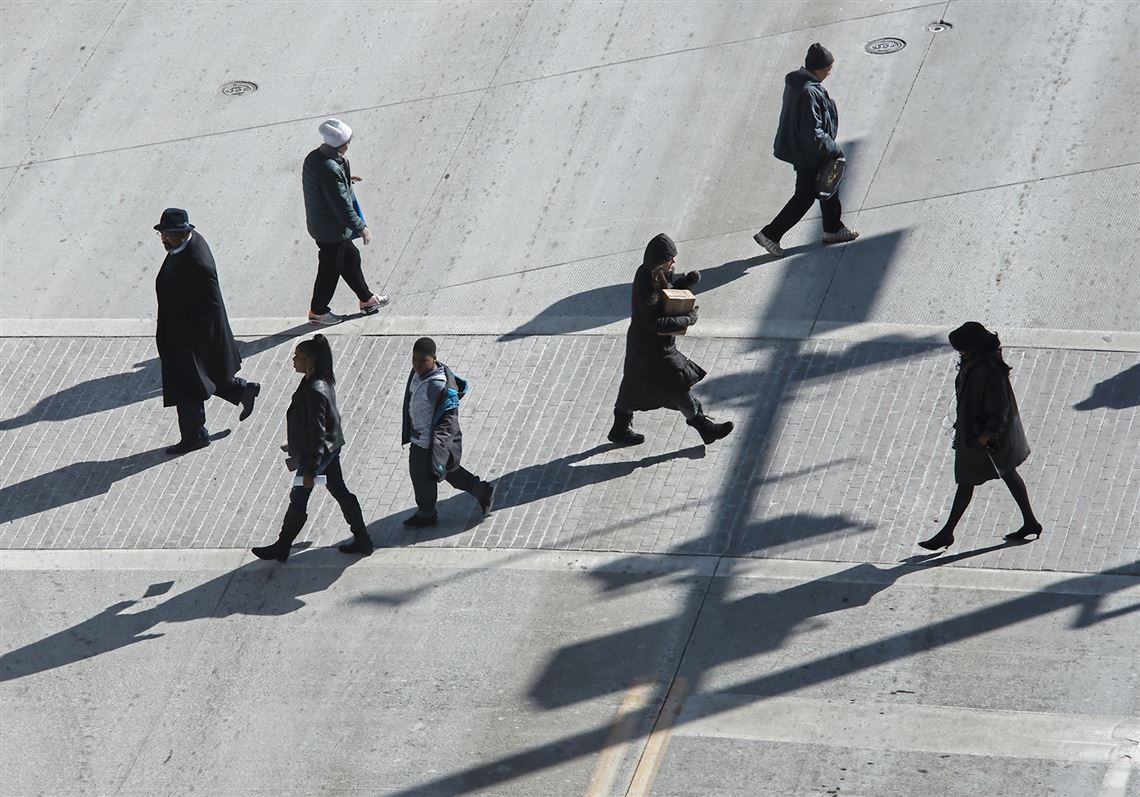A 35 percent increase in pedestrian deaths during the past 10 years is so stark that the federal Department of Transportation should consider a study to recommend steps to change the trend, a national traffic safety expert said as a new report captured the extent of the increase nationally and in Pennsylvania.
Richard Retting, safety director for Sam Schwartz Transportation Consultants, made his comments in advance of the release Thursday of a study he conducted for the Governors Highway Safety Association. That study, based on data from the first six months of 2018, projects that pedestrian deaths for last year will be 6,227, the first time that category has topped 6,000 since 1990 and up 250 (4 percent) from 2017.
“It’s the continuation of a very bleak trend,” Mr. Retting said. “A 35 percent increase in 10 years is astounding. Six thousand deaths of people crossing the street is unacceptable.”
Mr. Retting said those increasing numbers have occurred at a time when overall traffic deaths have dropped by about 6 percent in the past 10 years. The percentage of pedestrian deaths among all traffic deaths has increased from 12 percent in 2008 to 16 percent in 2017, the study showed. Mr. Retting said that is “unprecedented” since the collection of data on pedestrian deaths began in 1975.
In Pennsylvania, the study showed pedestrian deaths in the first six months of 2018 increased more than 40 percent versus the same period in 3017, from 64 to 90. Erin Waters-Trasatt, a spokeswoman for the state Department of Transportation, said the projected increase wouldn’t lead to substantial changes in the state’s extensive program for pedestrians.
“While the department analyzes data each year, each crash and fatality is unique and we generally look at three to five years of data when we are analyzing safety,” she said in a statement.
The state spends million of dollars each year for safety programs in each county, she said, For example, in 2018 and 2019, the department will distribute 1,065 yield-to-pedestrian signs to local communities to make drivers aware of pedestrian crosswalks.
Mr. Retting cited the usual factors of alcohol and distracted driving — largely attributed to cell phone use — but added that pedestrians share the blame because many of them also had too much to drink or were looking at their phones rather than paying attention to traffic.
Because many states have extensive pedestrian safety programs but deaths are still rising, Mr. Retting said, it is “long past the time” for the Department of Transportation’s National Highway Traffic Safety Administration to take action. Federal officials should study whether technology to detect pedestrians and to automatically apply brakes has improved to the point that those systems should be mandatory on vehicles, Mr. Retting said.
“It’s not for me to say whether they should be mandatory,” Mr. Retting said. “But the Department of Transportation should study whether the technology is reliable enough to make it mandatory. [The technology] seems to be getting there.”
Ms. Waters-Trasatt said Pennsylvania doesn’t believe a national study should be done.
“NHTSA presently has many tools and resources available to states on pedestrian safety and the administration is instrumental in connecting states and safety networks to share best practices, etc. Nationwide trends may or may not apply to specific states, so we find best-practice sharing to be especially helpful.”
The 42-page study shows that about 75 percent of pedestrian fatalities occur after dark. In the past 10 years, nighttime pedestrian deaths rose about 45 percent compared to an 11 percent increase in deaths during daylight hours.
Other trends cited in the study show that a majority of pedestrian deaths occur on local streets and state highways rather than at urban intersections. Deaths involving SUVs increased by 50 percent from 2013 to 2017, 20 percentage points higher than pedestrians killed by cars, largely because SUVs are larger and cause worse injuries when they hit someone.
Across the country, 25 states plus Washington, D.C., showed increases in pedestrian deaths in the first six months of 2018.
Mr. Retting said some safety efforts, such as New York City’s 5-year-old Zero Vision program that reduced speed limits and redesigned crosswalks in busy areas, have been successful at reducing deaths.
“Clearly, the numbers don’t show enough progress,” he said.
The study is available at ghsa.org/resources/Pedestrians19.
Ed Blazina: eblazina@post-gazette.com, 412-263-1470 or on Twitter @EdBlazina.
First Published: February 28, 2019, 5:15 a.m.


















